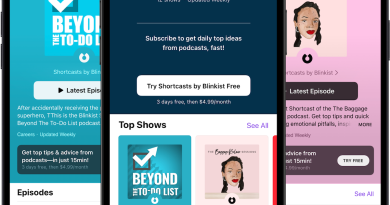Adobe Reviewed: What Creative Professionals Need to Know

In a world where creativity and technology intertwine seamlessly, Adobe stands as a titan in the realm of digital design and multimedia production. Whether you’re an aspiring graphic designer, an experienced video editor, or a seasoned photographer, navigating Adobe’s vast array of tools can feel like standing at the edge of a vibrant yet complex landscape. But fear not! In this post, we’ll break down everything creative professionals need to know about Adobe’s powerful suite—from must-have features that can elevate your projects to time-saving tips that will boost your productivity. So grab your stylus or keyboard and get ready to unlock the full potential of Adobe—your gateway to transforming imagination into stunning visuals awaits!
Introduction to Adobe and its products
In the fast-paced world of creative professionals, having the right tools can make all the difference. Adobe has long been a leader in providing powerful software that artists, designers, and content creators rely on every day. From stunning graphics to polished publications, Adobe’s suite of products has become synonymous with creativity and innovation. But is it truly the best option for everyone? With so many alternatives emerging in recent years, it’s essential to weigh both the strengths and weaknesses of Adobe’s offerings. This article dives deep into what you need to know about Adobe—its key products, their pros and cons, comparisons with other software options, and insider tips for maximizing your productivity. Whether you’re a seasoned pro or just starting out in your creative journey, understanding these elements will help you choose wisely as you navigate this vibrant landscape.
In-depth review of each Adobe product
Adobe Photoshop stands out as the industry standard for image editing. Its robust features allow users to retouch, manipulate, and create stunning graphics effortlessly. The intuitive interface makes it accessible for beginners while offering advanced tools that seasoned professionals appreciate. Illustrator is a powerhouse for vector graphics. Artists can craft intricate designs with precision using its versatile drawing tools. From logos to illustrations, Illustrator shines in creating scalable artwork without losing quality. InDesign takes center stage when it comes to layout design. Ideal for publishing projects like magazines or brochures, this software offers powerful typography controls and seamless integration with other Adobe products. Premiere Pro is excellent for video editing. It supports various formats and provides an array of effects and transitions that elevate any project’s visual storytelling. After Effects adds another layer of creativity by allowing animation and compositing work, making it perfect for dynamic presentations or film production tasks. Each product plays a unique role in the creative ecosystem, catering to different needs within the industry.
Comparison with other creative software options

When evaluating Adobe, it’s essential to consider rivals like Affinity, Corel, and Canva. Each offers distinct features catering to various user needs. Affinity products are known for their affordability and one-time purchase model. They provide robust tools similar to Adobe but can have a steeper learning curve for newcomers. Corel presents a different vibe with its unique interface and strong focus on illustration. It’s particularly popular among graphic designers who prefer vector graphics over raster images. Then there’s Canva, favored by social media marketers and casual creators. Its simplicity allows users to design quickly without extensive training or experience. While Adobe remains the industry leader due to its comprehensive suite of applications, other options offer compelling alternatives depending on your specific requirements or budget constraints. Exploring these choices can help you find the best fit for your creative workflow.
Tips and tricks for maximizing productivity with Adobe
To boost productivity with Adobe, start by customizing your workspace. Tailor the layout to fit your workflow and keep essential tools within reach. This simple change can save you valuable time. Keyboard shortcuts are game-changers. Learn the most useful ones for each application you use regularly. They speed up tasks significantly, allowing for smoother transitions between projects. Using templates is another smart move. Whether you’re designing graphics or creating layouts, having a set template helps maintain consistency while cutting down on design time. Don’t forget about cloud storage features. Syncing files across devices ensures that you can access your work from anywhere without hassle. Lastly, make it a habit to explore updates and new features regularly. Adobe frequently introduces enhancements that could streamline your processes or inspire fresh ideas in your creative projects.
Pricing and subscription options for Adobe Creative Cloud

Adobe Creative Cloud offers a variety of pricing plans to suit different needs. You can choose from individual subscriptions, business plans, or even student discounts. For individuals, the all-apps plan is often the most popular choice. It provides access to over 20 applications for around $52.99 per month. Alternatively, you can opt for single apps like Photoshop or Illustrator at a lower monthly rate. Businesses looking for team solutions will find tailored options that include additional features such as advanced collaboration tools and enhanced security measures. These plans start at approximately $33 per user each month. Students and teachers benefit from significant discounts, making top-tier software accessible without breaking the bank. It’s worth exploring these options if you’re part of an educational institution. Keep in mind that Adobe frequently updates its pricing structure and promotional offers; staying informed can yield better deals throughout your subscription journey.
Conclusion: Is Adobe the best option for creative professionals?
Adobe has long been a cornerstone in the world of creative software. With its powerful suite, it caters to a wide range of professionals—from graphic designers and photographers to illustrators and publishers. The extensive features offered by programs like Photoshop, Illustrator, and InDesign are hard to match. However, it’s essential to weigh both the pros and cons. Many users appreciate Adobe’s seamless integrations across platforms and robust support community. Yet, the steep learning curve for beginners can be daunting, not to mention the price tag associated with subscription plans. When comparing Adobe products with alternatives like Affinity Suite or CorelDRAW, it’s clear each option has unique strengths. While some may offer more budget-friendly solutions or simpler interfaces, they often lack the depth that Adobe provides. Maximizing productivity within Adobe requires knowing how to leverage shortcuts and tools efficiently. Whether you’re using presets in Lightroom or vector smart objects in Illustrator, these tricks can save time without sacrificing quality.



